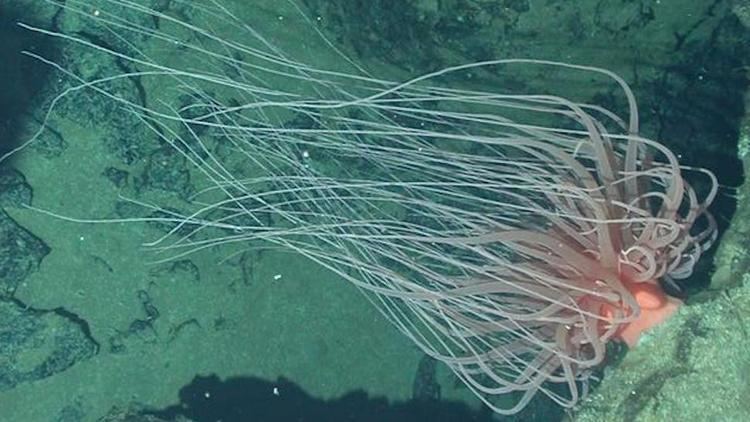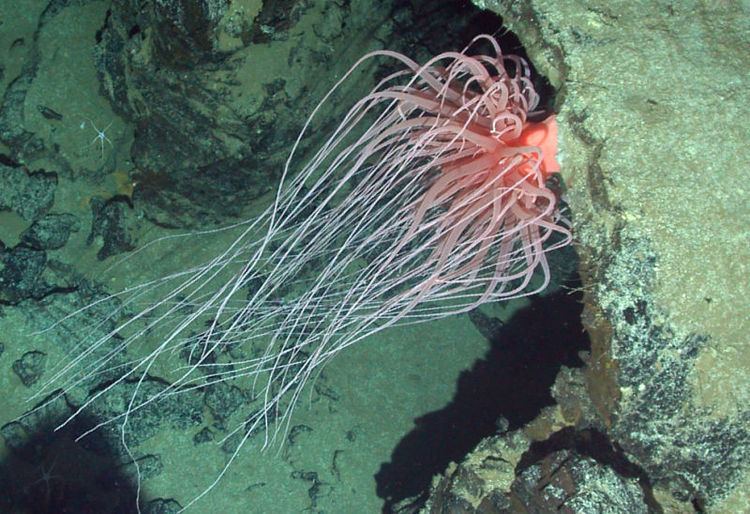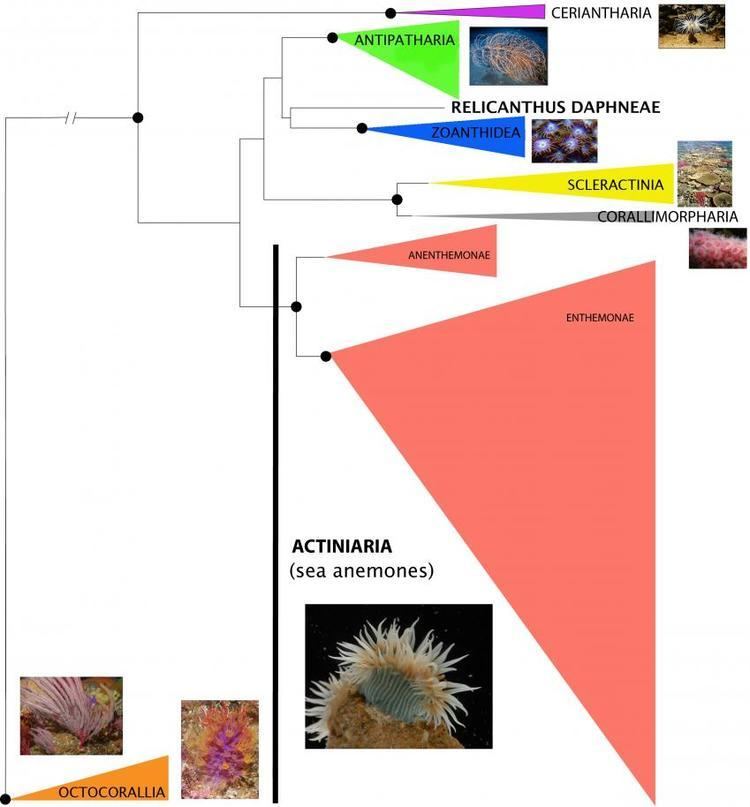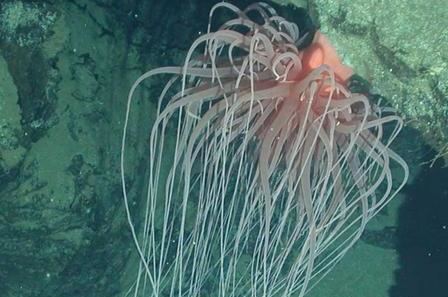Order Incerti ordinis | Scientific name Relicanthus daphneae Rank Species | |
 | ||
Family RelicanthidaeRodriguez & Daly, 2014 Genus RelicanthusRodriguez & Daly, 2014 Similar Bathocyroe fosteri, Bathocyroe, Bathymodiolus thermophilus, Boloceroides mcmurrichi, Benthoctopus | ||
Relicanthus daphneae (formerly Boloceroides daphneae) is a cnidarian resembling a sea anemone, which occurs in the depths of the East Pacific Rise and was described in 2006. The genus Relicanthus is monotypic.
Contents

Taxonomy

R. daphneae was described in 2006 and initially assigned to the genus Boloceroides (family Boloceroididae). The other species of the genus Boloceroides, however, are rather small and occur on warm seashores. A phylogenetic study from 2014 however, in which two genes of mitochondrial DNA and three genes from the nucleus of over a hundred different sea anemones were compared, showed that the species is not a sea anemone, but belongs in a new order. For the type therefore a new genus was named: Relicanthus (from Latin relictum; "covered", "stored", "left") in the new family Relicanthidae, the sister group of the Zoanthidea, which allows for the possible discovery of additional species. The specific name daphneae is after Daphne Gail Fautin, "in honor of her contributions to actinarian systematics."
Features

R. daphneae has a pink-colored cylindrical body capable of reaching a metre across, with long, thin, whitish tentacles up to two meters in length. The body is divided into 24 septa. The muscles of the mesenteries are less developed. The spirocysts, which are stinging cells in which the stinging tube is spirally rolled up and which are covered with adhesive threads instead of spines, are significantly larger than those of any other deep-sea species and among the largest of all cnidarians.
Habitat and range

Its habitat is the ocean floor, peripheral to hydrothermal vents. Its range is known to be in the Eastern Pacific (the type specimen was taken from the Lau Basin) but may extend beyond that.
The type specimen was collected by the submersible DSV Alvin.




